USITT-SE: Fabric Painting with Margaret Peot (2 of 3)
The first workshop we attended at USITT-Southeast (held the past weekend on the campus of the University of Georgia at Athens) concerned fabric painting techniques using a special type of transparent paint mixed and sold by Gene Mignola for costume painters like Margaret Peot (the workshop leader).
Mignola's fabric paint (or perhaps "fabric paint" is a better notation) is actually a sort of dye paste--dye suspended in a gum arabic base, which results in a transparent color medium that thins with water and can be used to paint silk, wool, and nylon substrates, including nylon/spandex stretch fabrics. Margaret told us that this type of fabric colorant was devised in part by legendary costume designer Willa Kim for doing painterly techniques on her dancewear designs. Mignola only sells it in bulk quantities (gallons and up) though, so for most folks working on a small scale in regional or academic theatre, you'd probably be better off blending your own in the smaller quantities you need on a project-by-project basis.
In this first workshop, we used the dye/gum paint to paint on woven silk and stretchy nylon/spandex swatches. Margaret illustrated how she achieves several unique paint effects in her work, from scales to warty blobs to feathers to wood-grain. Here are some images i snapped of a couple of processes.
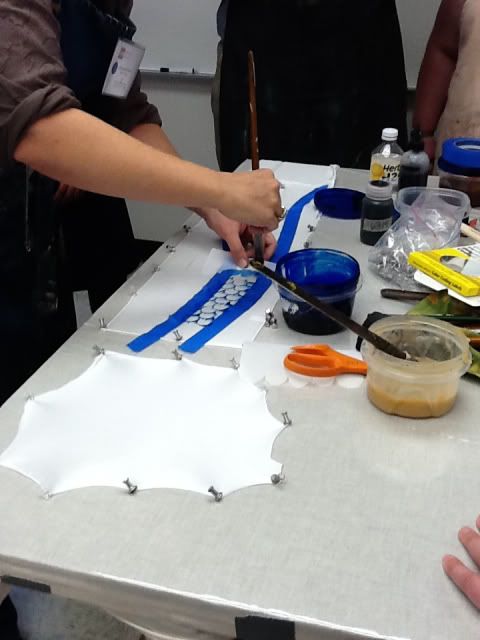
Margaret demonstrates a technique for using a stencil to paint scales.
Note how the fabric is pinned out on a vinyl surface, and masked off with blue tape.
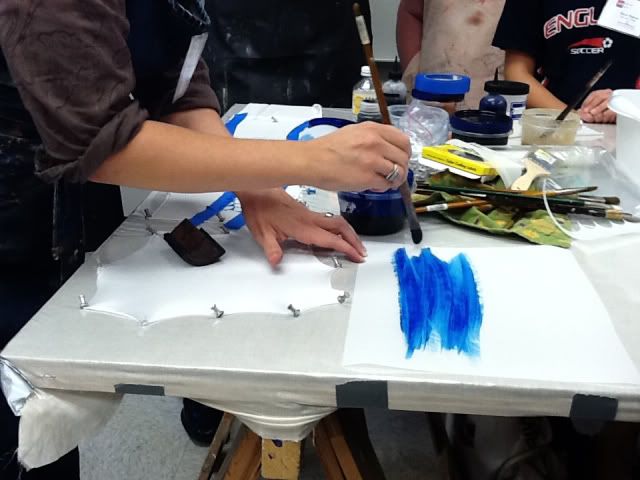
Margaret spreads paint on a plastic sheet.
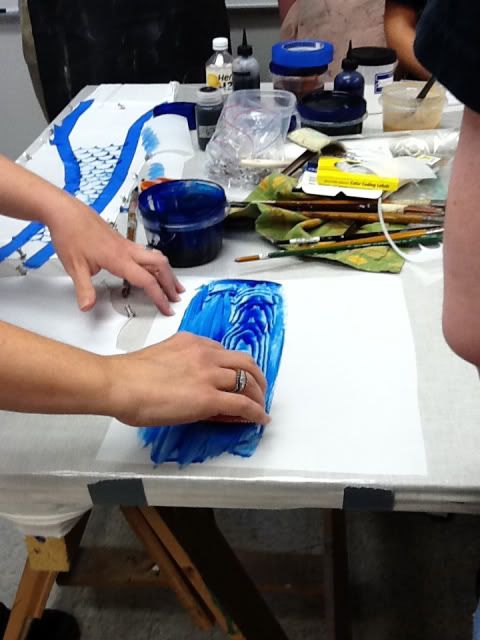
She uses a woodgrain rocker to create a moire/grain pattern in the paint.
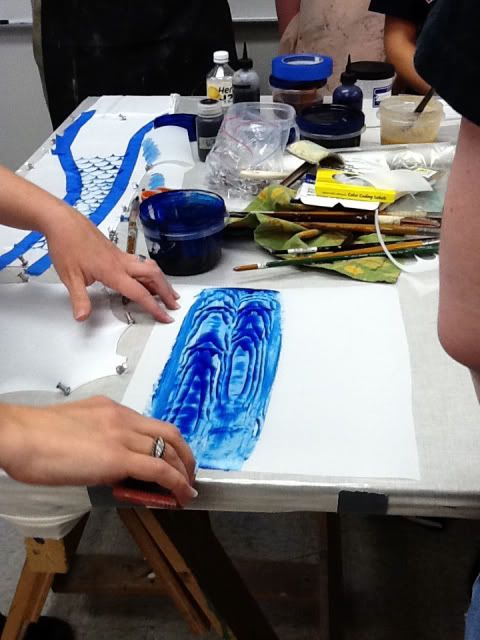
The paint layer on the plastic with the created pattern.
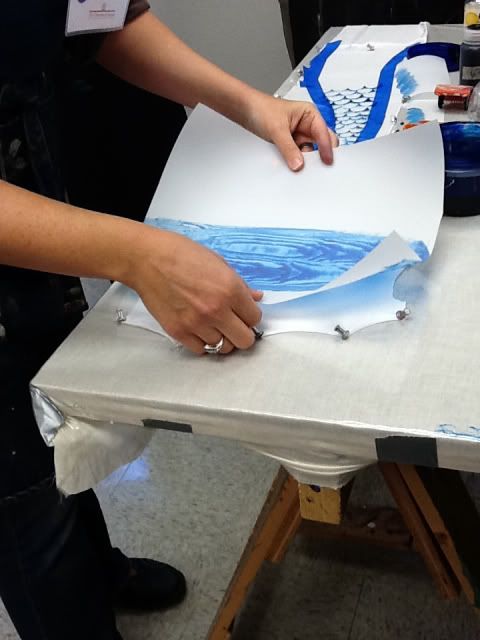
She lays the plastic, paint-side down, on her fabric swatch pinned out on the table.
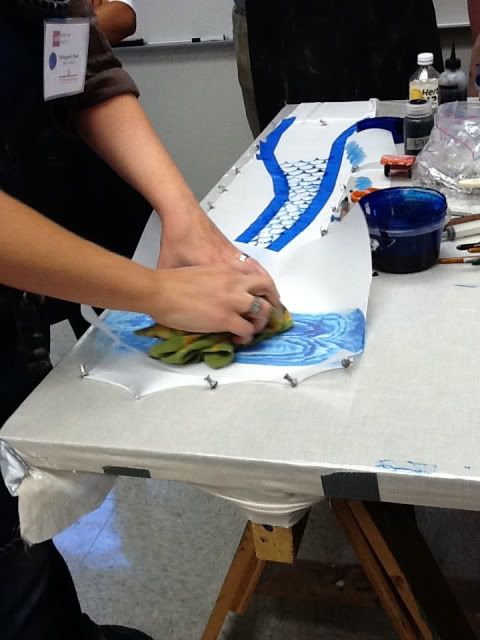
Margaret uses a soft cloth to smoothly transfer the pattern onto the fabric.
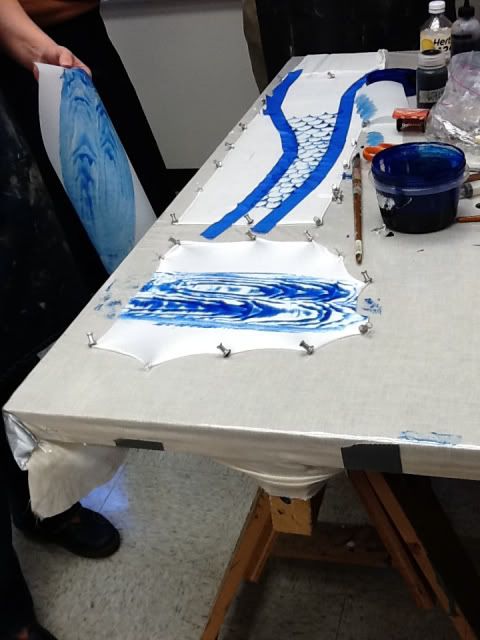
The finished swatch. Super cool!
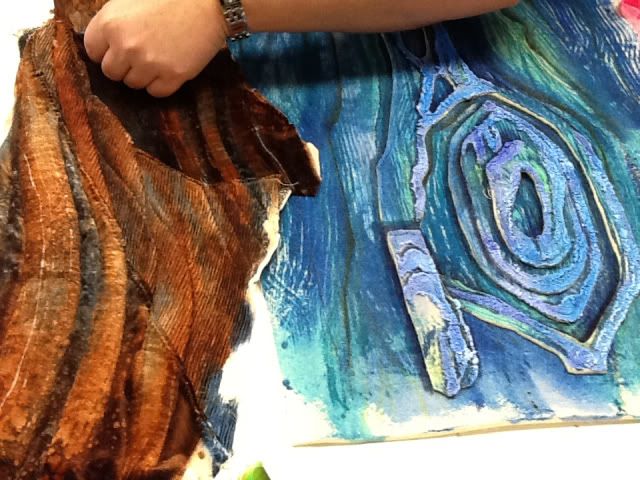
You can see how she used this technique in areas of the sample on the right here.
This piece is for woodgrain, but it could be used to make other effects like moire or water ripples as well.
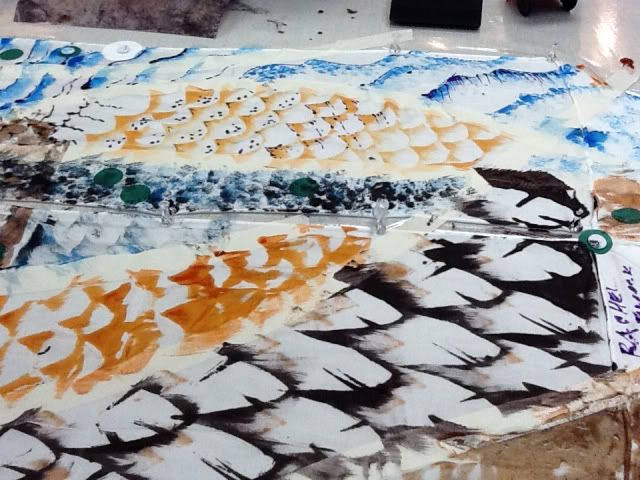
Here are some of the samples I created in the workshop on woven silk.
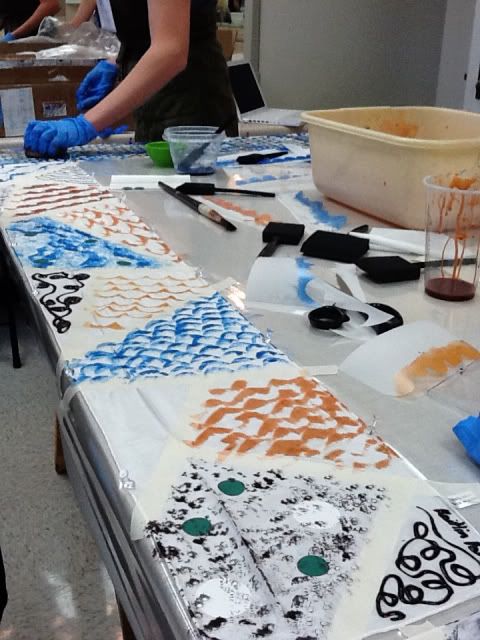
A shot of our work table, and the samples of other participants.
There were four such tables, with about six people at each one.
I've got another set of images to share later in the week of our second workshop, which will round out this series of three posts. I hope this is giving you a good idea why, if you can swing it without too much trouble, it's worth going to a regional conference now and then! Not only did two of our students win free admission to nationals, but we also had the opportunity to learn from and network with talented top-rung artists in the field like Margaret Peot!
Mignola's fabric paint (or perhaps "fabric paint" is a better notation) is actually a sort of dye paste--dye suspended in a gum arabic base, which results in a transparent color medium that thins with water and can be used to paint silk, wool, and nylon substrates, including nylon/spandex stretch fabrics. Margaret told us that this type of fabric colorant was devised in part by legendary costume designer Willa Kim for doing painterly techniques on her dancewear designs. Mignola only sells it in bulk quantities (gallons and up) though, so for most folks working on a small scale in regional or academic theatre, you'd probably be better off blending your own in the smaller quantities you need on a project-by-project basis.
In this first workshop, we used the dye/gum paint to paint on woven silk and stretchy nylon/spandex swatches. Margaret illustrated how she achieves several unique paint effects in her work, from scales to warty blobs to feathers to wood-grain. Here are some images i snapped of a couple of processes.

Margaret demonstrates a technique for using a stencil to paint scales.
Note how the fabric is pinned out on a vinyl surface, and masked off with blue tape.

Margaret spreads paint on a plastic sheet.

She uses a woodgrain rocker to create a moire/grain pattern in the paint.

The paint layer on the plastic with the created pattern.

She lays the plastic, paint-side down, on her fabric swatch pinned out on the table.

Margaret uses a soft cloth to smoothly transfer the pattern onto the fabric.

The finished swatch. Super cool!

You can see how she used this technique in areas of the sample on the right here.
This piece is for woodgrain, but it could be used to make other effects like moire or water ripples as well.

Here are some of the samples I created in the workshop on woven silk.

A shot of our work table, and the samples of other participants.
There were four such tables, with about six people at each one.
I've got another set of images to share later in the week of our second workshop, which will round out this series of three posts. I hope this is giving you a good idea why, if you can swing it without too much trouble, it's worth going to a regional conference now and then! Not only did two of our students win free admission to nationals, but we also had the opportunity to learn from and network with talented top-rung artists in the field like Margaret Peot!